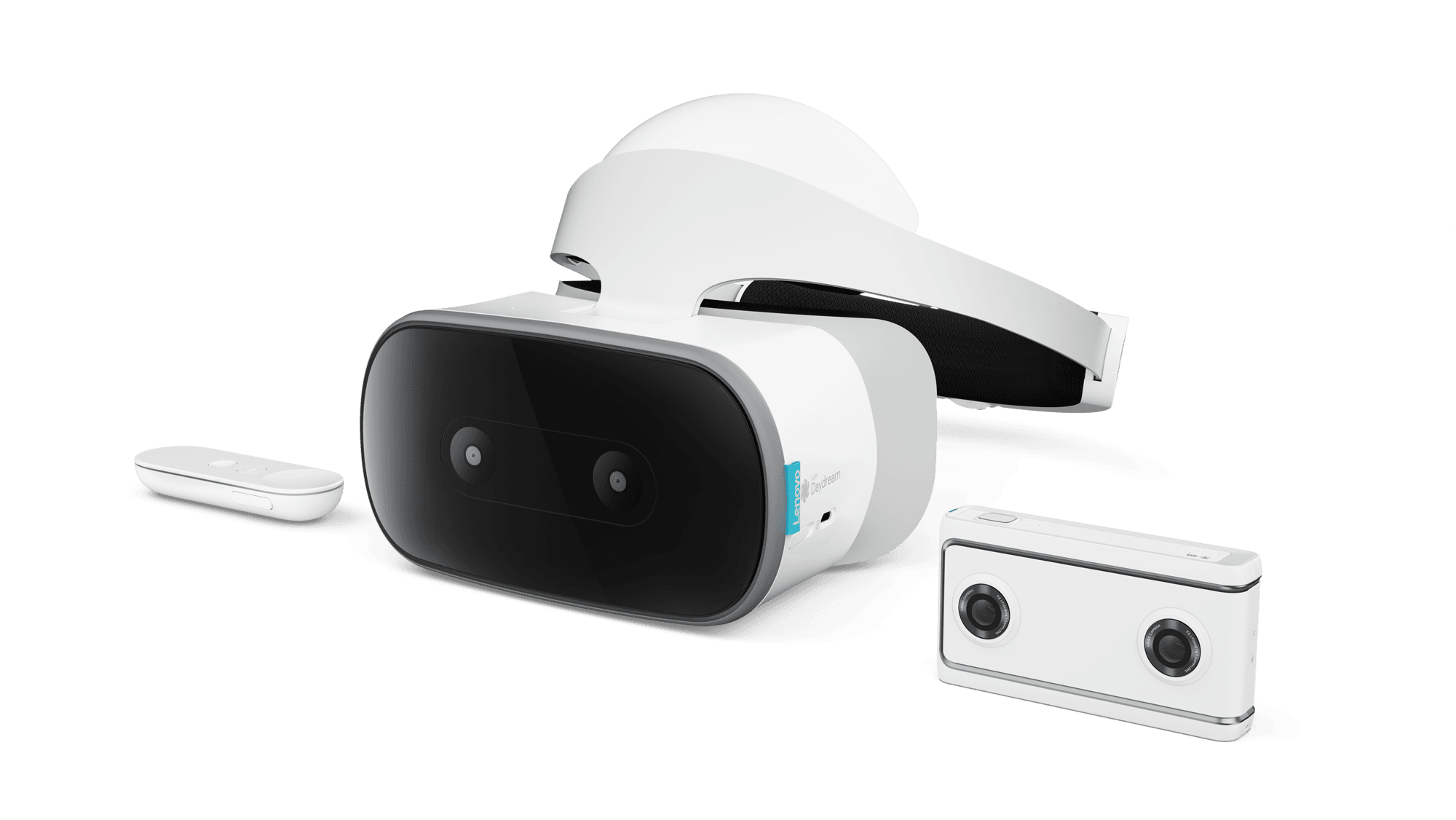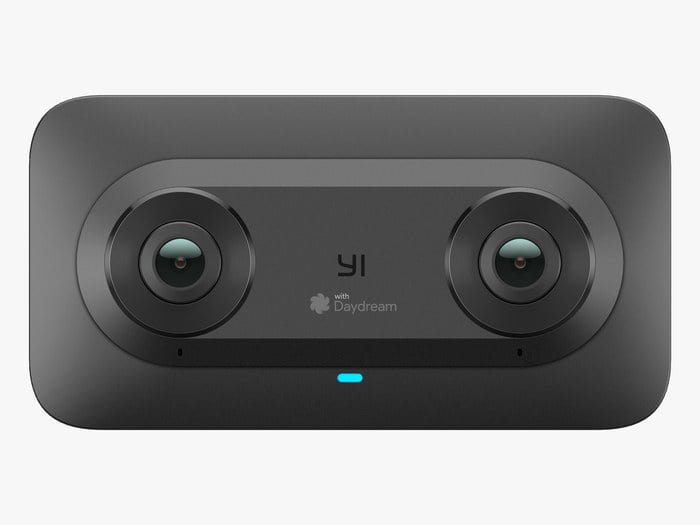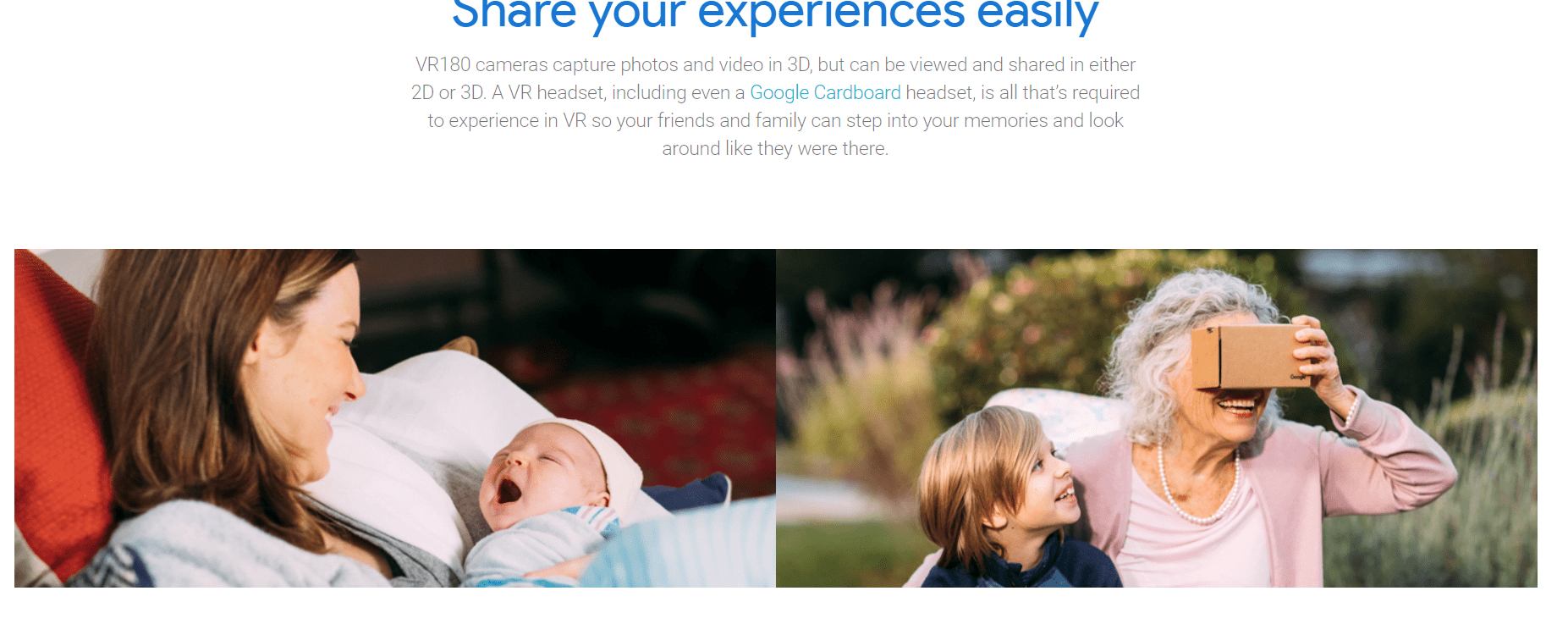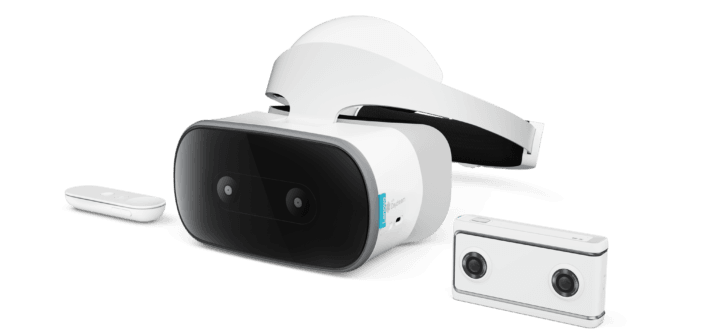VR180, Take us back, Please?
When Google first announced support for a VR180 format earlier this year, there wasn’t much to back it up. Now, however, Google has partnered with Lenovo, Yi, and LG on VR180-compatible cameras, and have also launched a new app for creating and viewing VR180 content. Google’s dedicated VR180 application can both transfer your photos and videos from your VR180-compatible camera to your phone, and also onward to Google Photos or YouTube. It even supports live streaming your experiences directly from your camera and phone.

Currently, there are two VR180 cameras announced that support both the format and Google’s Daydream VR initiative, from Lenovo and Yi. LG and Panasonic have been announced as partners, but details aren’t available on their cameras yet. With this move Google has also created some confusion by adopting what is the generic name for 180-degree, 3D capture — VR180 — as the name of its initiative that includes a specific format, tools, and co-marketing.
Companies have finally realized they can address most of these issues by simply changing the designs of their consumer “VR Capture” cameras to 180-degree stereo (3D) instead of 360-degree mono (2D). At first, it was only from startups like LucidCam, which we covered at last year’s CES, but now a number of major players are jumping on the bandwagon. More importantly, the format itself is getting some love. YouTube has added support for what it calls VR180, specifically designed to accommodate 3D video covering just one hemisphere.
Lenovo’s Mirage Camera With Daydream
 Capitalizing on the momentum Google has been building for Daydream — it’s entry-level VR ecosystem — Lenovo has introduced a 3D wide-angle point-and-shoot camera that is compatible with Google’s VR180 format and app. It features wireless upload to your Google Photo or YouTube accounts, making the creation of VR content easier than it’s ever been — no stitching or tagging required. The unit’s two cameras are 13MP with the full 180-degree-by-180-degree field of view. You get a choice of recording video at up to 4K, still images, or live streaming.
Capitalizing on the momentum Google has been building for Daydream — it’s entry-level VR ecosystem — Lenovo has introduced a 3D wide-angle point-and-shoot camera that is compatible with Google’s VR180 format and app. It features wireless upload to your Google Photo or YouTube accounts, making the creation of VR content easier than it’s ever been — no stitching or tagging required. The unit’s two cameras are 13MP with the full 180-degree-by-180-degree field of view. You get a choice of recording video at up to 4K, still images, or live streaming.

The device is tiny, weighing in at just 139 grams, so you can take it with you anywhere. As a nice touch, the Mirage starts with 16GB of on-board memory (especially helpful if you forget to put a card in it before running out for the day) and supports a microSD up to 128GB for additional storage. It can upload and stream directly to the web using its built-in Wi-Fi. There is also an LTE-enabled version. Both versions use Qualcomm’s 626 SoC, which offers integrated dual-camera support. You can get about two hours of continuous recording, and the battery is removable, so heavy users will presumably be able to stock spares. Lenovo is working hard to make VR content creation affordable and says it will be selling the Mirage camera for under $300.
Yi Horizon VR180 Camera

Chinese camera company Yi has pushed its new cameras VR180 specs even further, to 5.7K resolution at 30fps. It also has a pretty cool 2.2-inch touchscreen and a four-microphone design for audio. I only got a brief opportunity to play with the camera and didn’t have a chance to shoot any video. It seems like a good design, with a swiveling LCD that provides for framing of those ever-so-important selfies (I’m more than a bit skeptical that people will look their best when posing two feet in front of a 180-degree stereo camera, but I’m sure we’ll see plenty of it done). Unlike the Lenovo camera, the Yi Horizon uses the new Ambarella H2V95 chipset. Like the other VR180 cameras, the Yi is expected to ship in the spring, although pricing wasn’t part of the announcement.
Will VR180 Rescue VR?
It ‘s still early days for VR180. It’s also easy to see why camera makers want it to succeed. The traditional action camera market seems to be saturating, and the point-and-shoot market has pretty much been wiped out by the smartphone. If nothing else, VR180 seems like a superior format to 2D capture for anyone already creating action videos. However, as standalone devices, VR180 cameras cost nearly as much as a midrange phone. So, for the format to really catch on, it will need to become part of future phone designs. There is no reason it can’t since many phones already spend the money for two cameras. Supporting VR180 would probably mean moving them further apart, and greatly increasing the video processing bandwidth, but eventually, those will be possible. It would also mean coming to terms with field-of-view-versus-resolution tradeoffs.
The bigger question is whether the additional effort is justified for viewers. Sure, Daydream headsets are inexpensive, and Cardboard is even cheaper, but they’re both a lot more work that just looking at a screen. It’s possible an even simpler solution like 2D 180 might catch on. Perhaps smartphones with one traditional camera and one 180-degree camera, so viewers could look at what you’re shooting, but also have the ability to move around the scene using the wide-angle stream.
Bringin’ Us Back

Both new VR180 cameras can live stream directly to YouTube, or save your memories to Google Photos. The Photos integration was particularly important, Bavor says, “because we see this being such a strong product for memory capture. And memories live in your own private repository of photos until you decide otherwise.” If you want a clue of where this is all going, look at the Pensieve, the swirling store of memories that comes up repeatedly in Harry Potter. “We’ve got a lot of work to do to get there fully,” Bavor says, “but I think there’s something universal about memory and nostalgia and a desire to reflect on, step back into, be a part of, memories or experiences or time with people you care about.”




